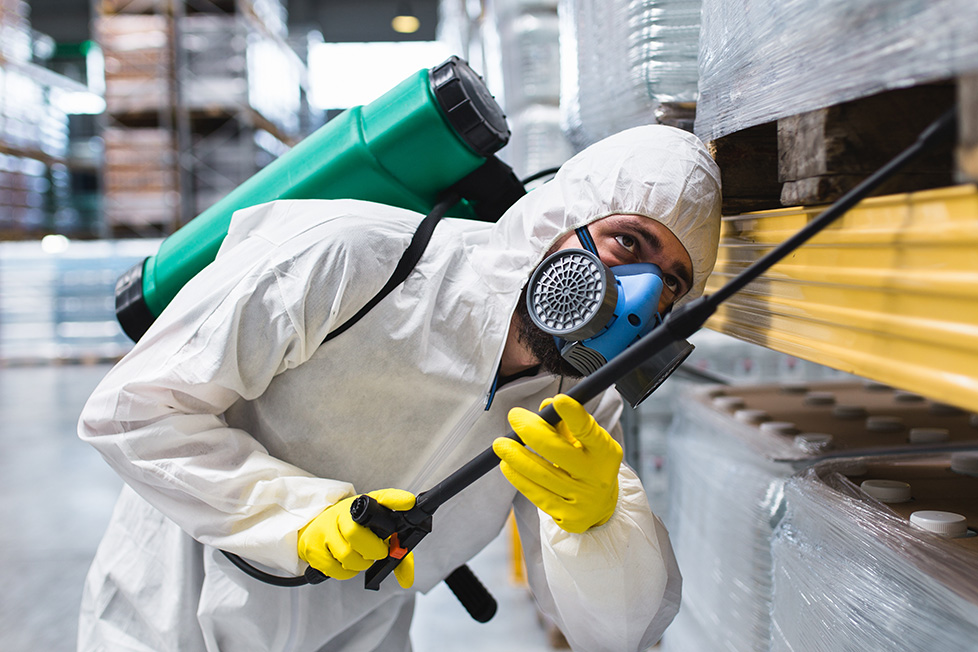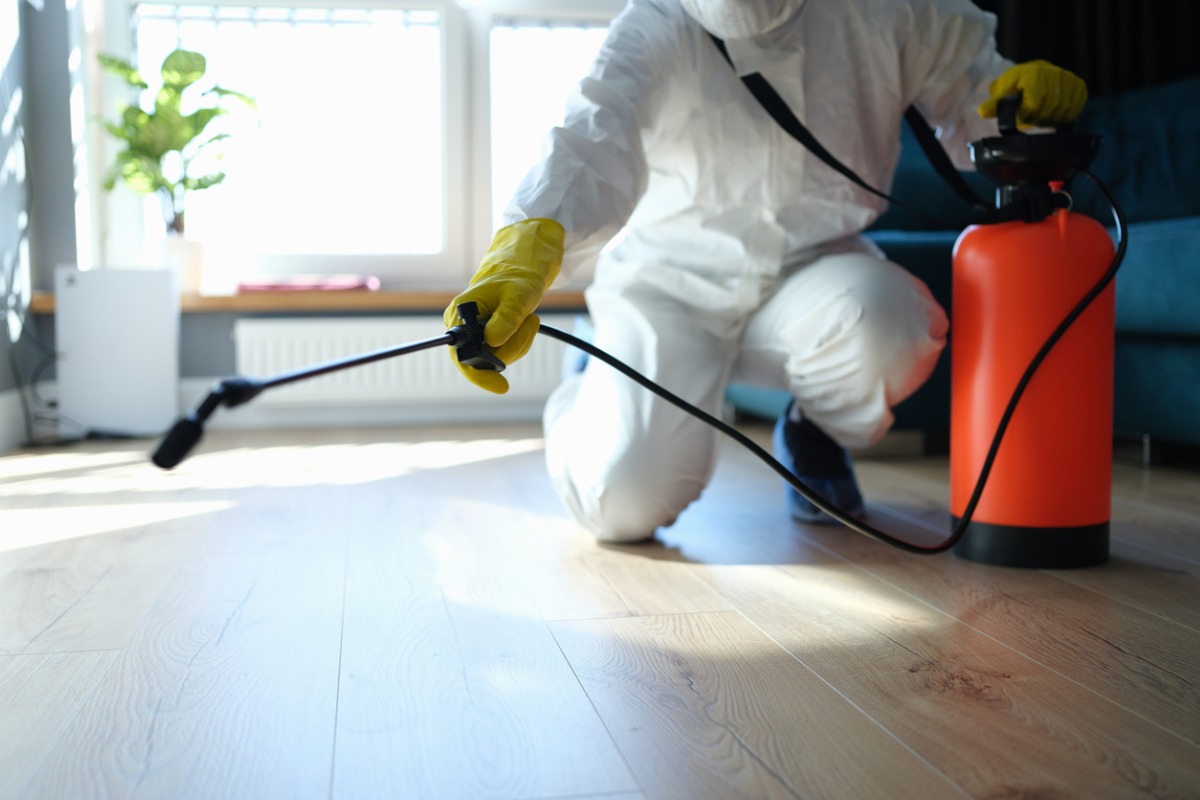Fast and reliable Pest Control for home protection.
Eco-Friendly Parasite Control Approaches for Handling Wild Animals in Urban Areas
Urban areas frequently discover themselves at the junction of human activity and wild animals, causing distinct challenges in insect management. Eco-friendly techniques emphasize sustainable conjunction, employing methods such as environment adjustment and all-natural repellents to minimize human-wildlife disputes. These approaches not just secure the setting yet additionally enhance community interaction in wildlife administration. As metropolitan populaces proceed to expand, understanding the dynamics of wildlife interactions ends up being increasingly vital. What cutting-edge approaches can be applied to ensure both ecological balance and urban safety? Discovering this inquiry reveals an engaging landscape of possible remedies.
Understanding Urban Wildlife Dynamics
Recognizing Urban Wild animals Characteristics is essential for establishing reliable and green parasite control techniques. Urban areas are progressively ending up being environments for various wild animals species, driven by elements such as environment fragmentation, food availability, and human encroachment. Acknowledging these dynamics enables for a nuanced technique to pest monitoring that straightens with environmental principles.
Urban wild animals commonly consists of types such as raccoons, squirrels, and birds, which adapt to city environments, finding particular niches in environment-friendly rooms, parks, and also suburbs. Their visibility can result in conflicts with humans, specifically when they manipulate personnels for food and sanctuary. Recognizing the actions and eco-friendly functions of these species educates methods that decrease unfavorable communications while advertising biodiversity.
Moreover, acknowledging the interdependencies within metropolitan communities assists in recognizing critical areas for habitat preservation and reconstruction. This understanding adds to the advancement of integrated insect administration (IPM) methods that take into consideration the environmental balance, therefore lowering reliance on dangerous chemicals. By fostering conjunction in between people and city wild animals, cities can produce healthier environments that profit both locals and regional environments, paving the way for lasting city living.
All-natural Repellents and Deterrents
All-natural repellents and deterrents supply a sustainable option to traditional insect control methods by using the power of nature to keep unwanted types at bay. These environmentally friendly options typically use plant-based components, important oils, and various other naturally taking place materials that deter pests without hurting the atmosphere.
One efficient natural repellent is peppermint oil, which is known to push back rodents and bugs. Its solid scent is undesirable to lots of bugs, making it a preferred selection for metropolitan setups. Vinegar and citrus peels can serve as deterrents, as their strong odors are generally unattractive to numerous wild animals.
In addition, diatomaceous earth is an all-natural powder that can be spread in areas vulnerable to insect task, effectively dehydrating and discouraging pests without presenting dangers to non-target species. Garlic sprays and neem oil are acknowledged for their capability to push back a vast range of bugs, including both pests and larger wildlife.
Implementing these all-natural repellents not only decreases dependence on chemical pesticides however additionally advertises a much healthier urban ecosystem, promoting a more well balanced coexistence in between humans and wildlife. By making use of these strategies, metropolitan areas can successfully manage insect populations while reducing environmental impact.
Environment Alteration Strategies
Efficient environment adjustment strategies play an important function in sustainable insect management by modifying the setting to make it less for this website pest problems. By comprehending the ecological characteristics of metropolitan areas, residential or commercial property owners can implement strategic modifications that discourage parasites while advertising biodiversity.
(Cockroach Control)One primary technique involves preserving correct hygiene. This consists of normal waste elimination, protecting garbage containers, and getting rid of standing water to lower reproducing sites for insects and rats. Furthermore, landscaping methods such as selecting native plants can improve eco-friendly balance, offering environments for beneficial microorganisms while lessening sources for parasites.
An additional crucial approach is to seal entry factors in buildings. Inspecting and repairing cracks in structures, walls, and windows can considerably reduce pest accessibility. Furthermore, creating physical obstacles, such as fences or plant buffers, can prevent wild animals movement right into human-inhabited locations.
Integrated Insect Monitoring Practices
Structure upon habitat modification techniques, integrated insect management (IPM) methods provide an alternative method to controlling pest populations while decreasing environmental influence. IPM incorporates different strategies, consisting of biological, cultural, mechanical, and chemical controls, to attain effective parasite administration.
Organic control involves the introduction of natural killers or bloodsuckers to reduce insect populaces. Social methods, such as crop rotation and sanitation, interrupt pest life process and decrease their habitats - Pest Control. Mechanical controls, like catches and barriers, supply prompt remedy for parasite stress without chemical treatment
Chemical controls are used as a last hope, focusing on targeted applications that restrict harm to non-target species and the environment. The option of eco-friendly chemicals, when necessary, is integral to the IPM framework. In addition, keeping an eye on parasite populaces and analyzing potential damage assists notify decision-making, guaranteeing that treatments are timely and reliable.
Neighborhood Participation and Education

(Spider Control)Workshops and informative sessions can equip locals with expertise regarding native varieties, environment conservation, and effective safe bug monitoring methods. Collaboration with schools, neighborhood organizations, and government companies further enhances instructional outreach, ensuring that vital info reaches diverse target markets.
Additionally, community-led efforts, such as area clean-up days and environment restoration tasks, not only advertise biodiversity but likewise reinforce area ties. Pest control service. By motivating homeowners to share their experiences and monitorings, neighborhoods can develop targeted methods that address particular local pest concerns
Integrating feedback from homeowners right into pest administration intends allows a more responsive and flexible technique to wild animals challenges. Ultimately, informed and engaged areas are vital to accomplishing long-lasting success in green pest control, resulting in much healthier city environments that appreciate both human and eco-friendly demands.

Conclusion
In verdict, eco-friendly insect control comes close to offer lasting remedies for managing metropolitan wildlife. By prioritizing habitat adjustment, making use of all-natural repellents, and carrying out integrated bug monitoring practices, communities can cultivate a harmonious coexistence with neighborhood animals.